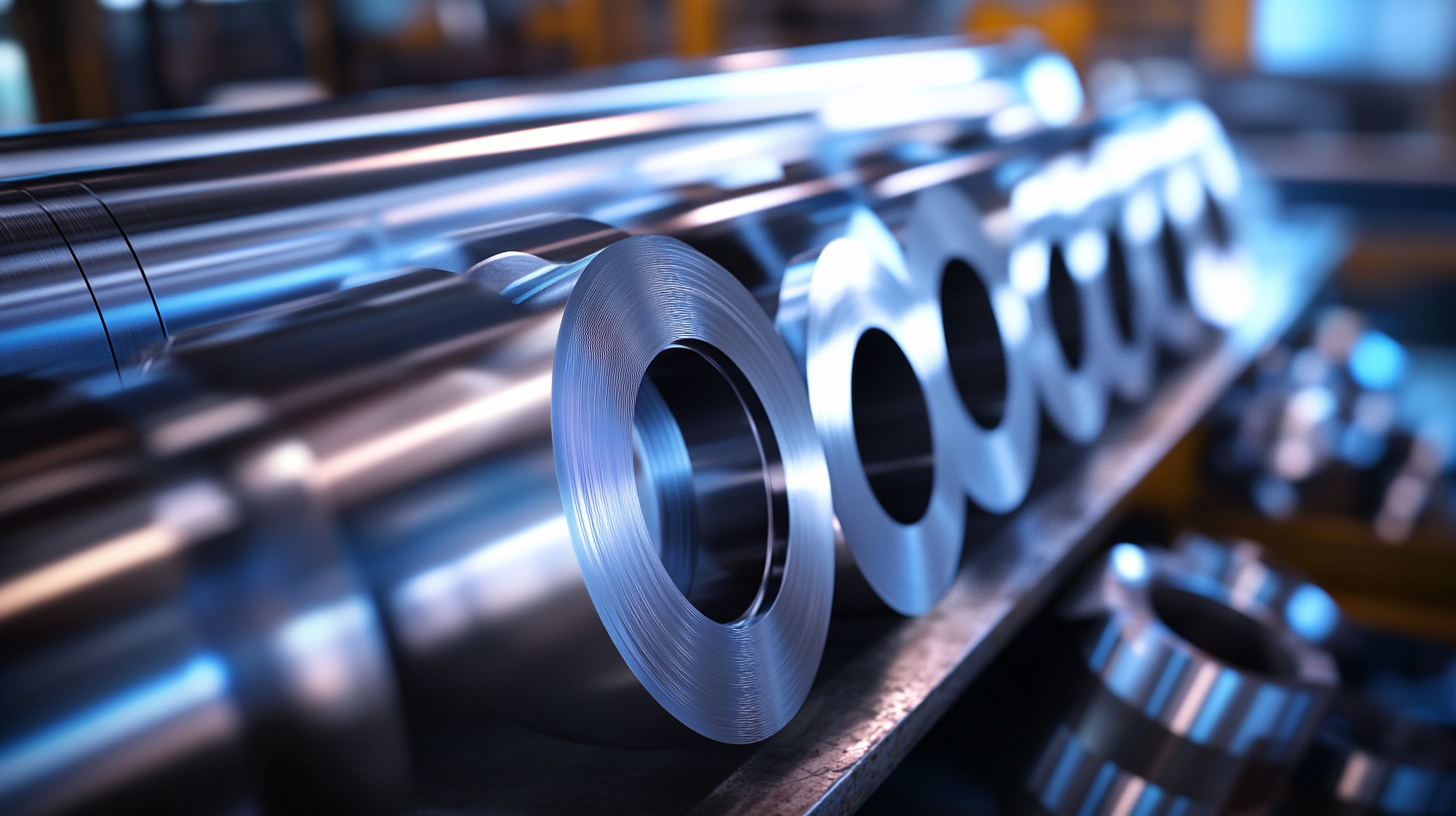Leave your message now to get your free sample and discount price
Leave your message now to get your free sample and discount price
In the rapidly evolving landscape of advanced materials, Titanium Tungsten Alloy has emerged as a frontrunner in applications spanning aerospace, defense, and medical technology. According to a recent market analysis by Grand View Research, the global titanium alloy market is expected to reach USD 7.18 billion by 2025, driven by the increasing demand for high-performance materials that offer superior strength-to-weight ratios and corrosion resistance. The unique properties of Titanium Tungsten Alloy not only contribute to enhanced durability and performance but also play a critical role in reducing overall system weight, a key factor in modern engineering. As we delve into the importance of manufacturing excellence in this niche, it becomes evident that the ability to produce high-quality Titanium Tungsten Alloy is pivotal for ensuring the success of future innovations and maintaining competitive advantages in the industry.

Recent advancements in titanium tungsten alloy production techniques are paving the way for enhanced applications in various industries, notably in aerospace and medical devices. The integration of β-type titanium alloys has shown significant promise, particularly for dental implants. According to a comprehensive review, these β-titanium alloys display exceptional mechanical properties, including a modulus of elasticity that closely mimics that of human bone, which is crucial for minimizing stress shielding effects in implant applications. This property is particularly highlighted, as it contributes not only to the longevity of dental implants but also to improved patient comfort.
In terms of production techniques, innovative joining methods like welding are essential for constructing lightweight material structures that utilize titanium tungsten alloys. The latest reports indicate that advanced welding techniques can enhance the structural integrity and performance of these alloys, providing manufacturers with greater flexibility in design and application. These advancements are crucial as industries increasingly demand materials that combine high strength-to-weight ratios with excellent corrosion resistance, a characteristic that titanium tungsten alloys inherently possess. As the manufacturing landscape continues to evolve, the synergy between cutting-edge production methods and high-performance alloys positions the sector for unprecedented growth and innovation.

Titanium tungsten alloys are rapidly gaining prominence in modern industrial applications due to their exceptional properties, which surpass those of conventional steels. The unique combination of titanium and tungsten results in materials that are lightweight yet possess remarkable strength, corrosion resistance, and high-temperature stability. As industries push for more efficient, durable, and cost-effective solutions, the significance of these alloys cannot be overstated. For instance, advancements in welding techniques have enabled the production of high-quality welds in aluminum-titanium and titanium-tungsten applications, crucial for sectors such as aerospace and automotive.
The integration of titanium tungsten alloys in high-end applications extends to areas requiring specialized machining processes, such as Electrical Discharge Machining (EDM). The experiments indicate that the unique microstructures of titanium alloys contribute to improved machinability and tool longevity, making them ideal for complex designs and precision components. In addition, the development of advanced coatings and compositions further enhances the performance and durability of these alloys. This relentless innovation and commitment to quality position titanium tungsten alloys at the forefront of modern manufacturing, addressing the evolving needs of various industries.
| Application | Alloy Composition | Properties | Industry |
|---|---|---|---|
| Aerospace Components | Ti-6Al-4V + W | High strength, corrosion resistance | Aerospace |
| Medical Devices | Ti + W composite | Biocompatible, durable | Medical |
| Defense Equipment | Ti + W Alloy | High toughness, lightweight | Defense |
| Energy Sector Tools | Ti-45Al-2W | High thermal resistance | Energy |
| Automotive Components | Ti + W alloys | Lightweight, strong | Automotive |
Quality control is a cornerstone of excellence in titanium tungsten alloy manufacturing, particularly in high-stakes industries like aerospace and medical devices. Recently, Alloy Specialties has become a pioneer by incorporating Hexagon's Tempo robotic quality control system, which enables lights-out operations on the manufacturing floor. This innovation allows for real-time monitoring and adjustment of processes, significantly reducing the likelihood of defects. According to a recent industry report, companies that adopt automated quality control solutions can achieve quality improvements of up to 30%, demonstrating the critical role of technology in maintaining high standards.
Moreover, the integration of advanced microscopy techniques in the aerospace sector has further strengthened quality assurance mechanisms. The aerospace industry, which cannot afford the slightest defect, has seen an uptick in the adoption of these methods, leading to enhanced reliability and safety in aircraft manufacturing. Research indicates that implementing comprehensive quality control processes can lead to a reduction in manufacturing variances by nearly 25%. As the landscape of metal additive manufacturing evolves, there is an increasing emphasis on data-driven modeling to optimize manufacturing parameters, reinforcing the need for robust quality control measures to ensure the integrity of finished products.
In the realm of titanium tungsten alloy production, sustainability practices are at the forefront of manufacturing excellence. With increasing awareness around environmental impacts, manufacturers are adopting innovative methods to reduce carbon footprints. The implementation of a sustainability index for processes like micro-EDM drilling exemplifies how industries are evolving. This approach not only enhances efficiency but also prioritizes environmental protection, aligning manufacturing practices with global sustainability goals.
Tips for adopting sustainable practices in titanium tungsten alloy production include investing in energy-efficient technologies and optimizing resource management. By using advanced materials and processes, manufacturers can minimize waste and improve overall efficiency. Additionally, collaboration with industry leaders in the advanced cutting tools sector can drive further innovations, paving the way for a greener future while maintaining competitiveness in the market.
As the demand for titanium tungsten alloys grows, particularly in sectors like mining and hardbanding, companies must ensure their production methods are sustainable. This commitment to sustainability will not only position manufacturers as leaders in their field but also contribute positively to global efforts in reducing environmental impacts.
This chart illustrates the sustainability practices implemented in the production of Titanium Tungsten alloys over the years. The chart showcases the gradual increase in the use of recycled materials and renewable energy sources, indicating a commitment to sustainable manufacturing processes.
As the demand for high-performance materials continues to rise across various industries, innovative advancements in titanium tungsten alloy manufacturing technology are paving the way for a new era of production excellence. The integration of advanced techniques such as additive manufacturing, also known as 3D printing, is revolutionizing the way we approach alloy creation. This technology allows for intricate designs that were previously unimaginable, pushing the boundaries of material performance and application.
Moreover, the introduction of smart manufacturing processes, like IoT and AI-driven analytics, is enhancing precision and efficiency in production lines. These innovations not only streamline operations but also ensure consistent quality in the final products. Additionally, ongoing research in metallurgical science is leading to the development of new alloy formulations that optimize strength-to-weight ratios, corrosion resistance, and overall durability. With these trends at the forefront, the future looks promising for titanium tungsten alloy manufacturing, as it continues to meet the adaptive needs of industries ranging from aerospace to medical technology.

